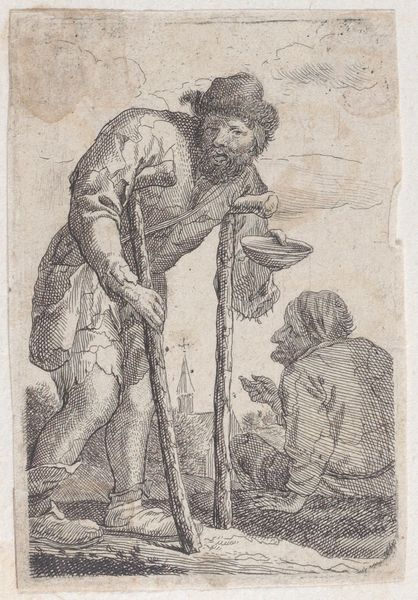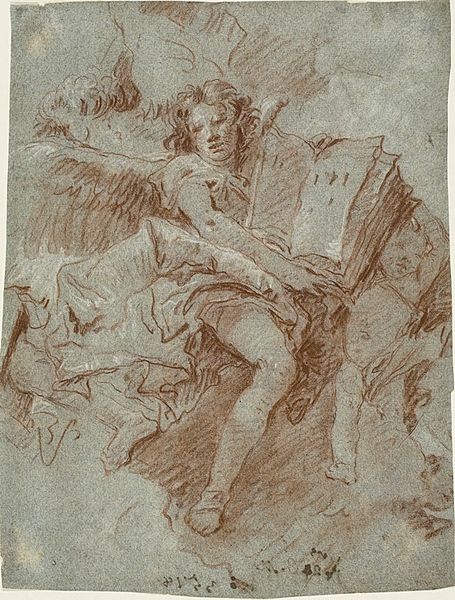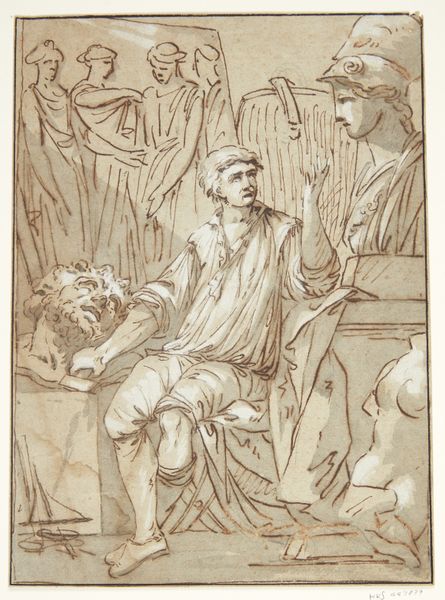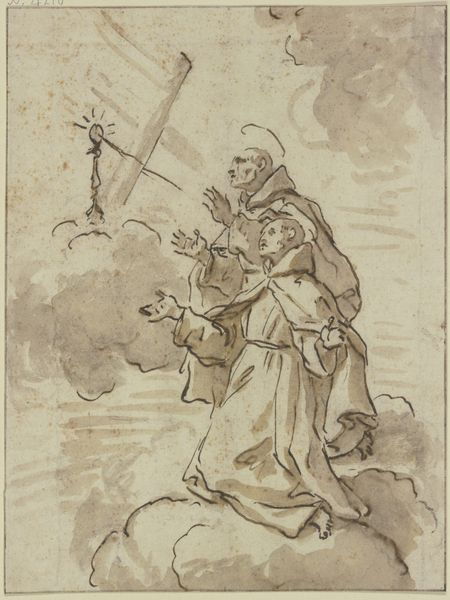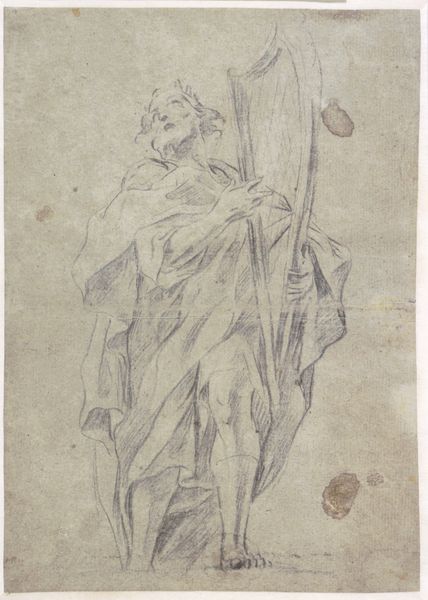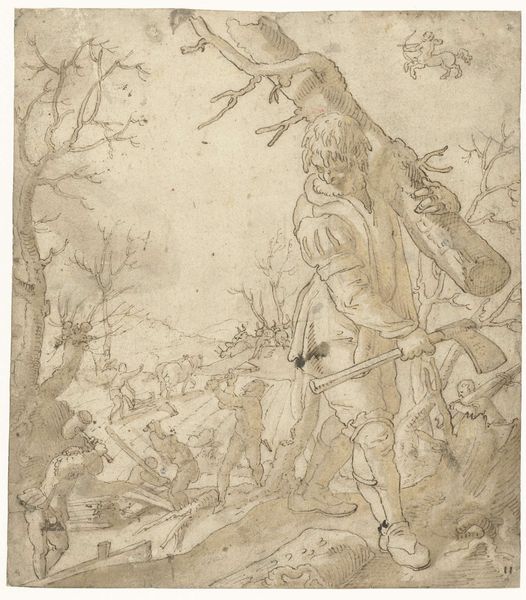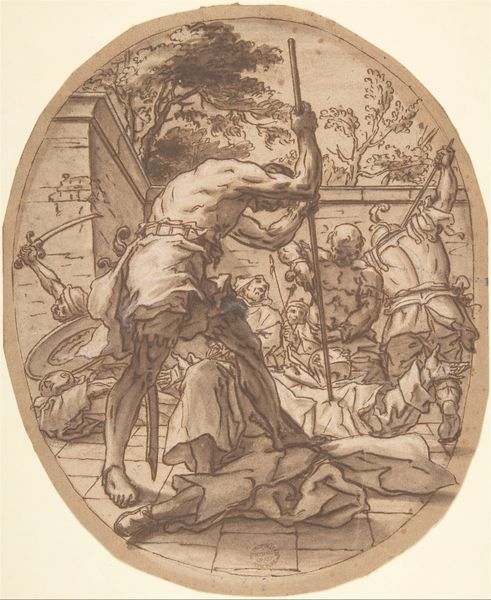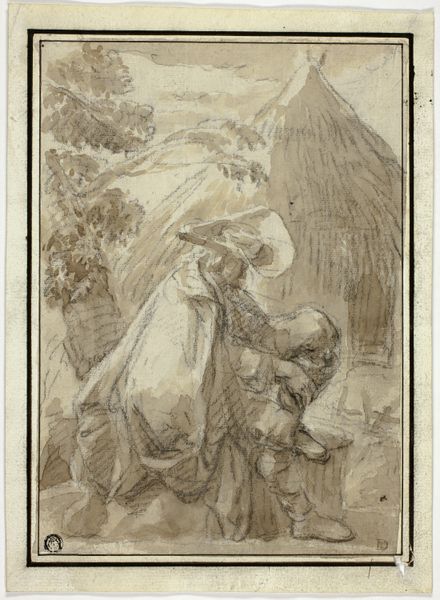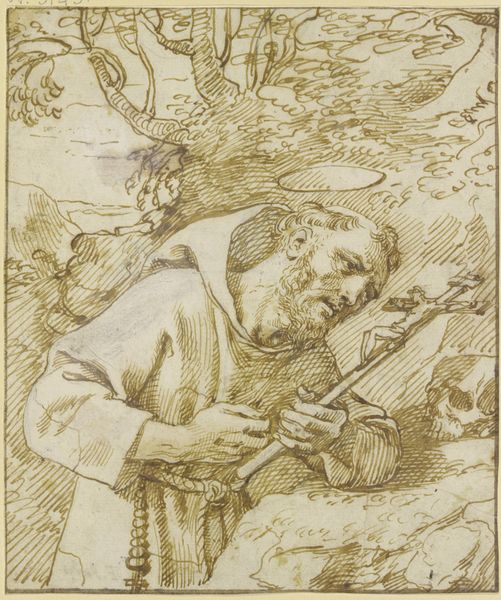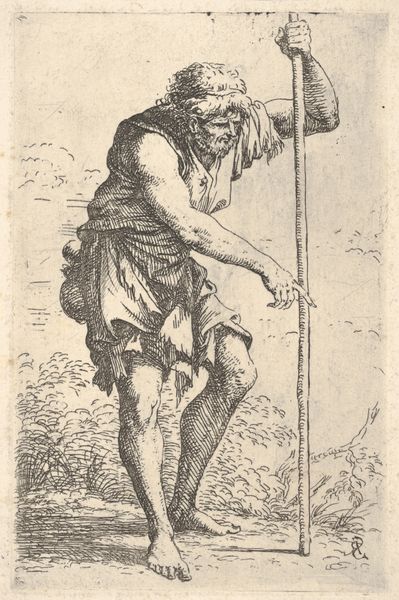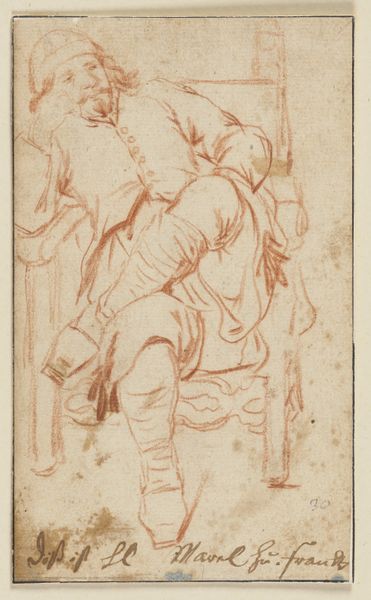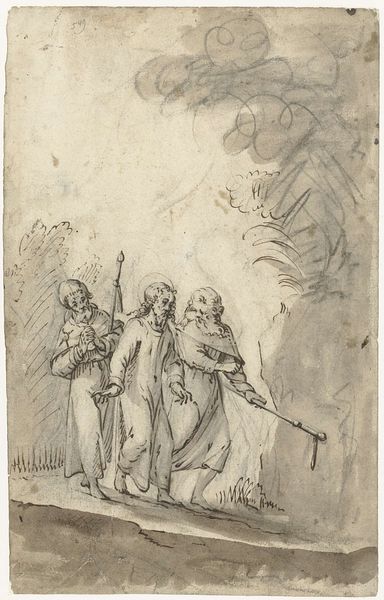
drawing, print, paper, ink
#
portrait
#
drawing
# print
#
landscape
#
figuration
#
paper
#
11_renaissance
#
ink
#
italian-renaissance
Dimensions: 141 × 118 mm
Copyright: Public Domain
Curator: Parmigianino’s "Old Shepherd Leaning on a Staff," made sometime between 1524 and 1531, offers us a glimpse into the pastoral interests of the Italian Renaissance through an ink drawing. It's currently held here at The Art Institute of Chicago. Editor: My first thought is how delicately the lines capture a quiet melancholy. There’s a certain weariness in the downward gaze of the shepherd that resonates beyond the image itself. Curator: That's a fascinating read. We should recall that this drawing comes at a time when shifts in patronage began, influencing how and why such images were created. This drawing arguably highlights how artists responded to broader cultural and philosophical shifts, re-evaluating the public function of art and iconography. Editor: Absolutely. The figure of the shepherd, though seemingly simple, carries a rich symbolic weight. Across cultures, the shepherd is often a protector, a guide, sometimes even a stand-in for spiritual leadership. The staff is also of interest to me as a possible symbol. The lines Parmigianino chose give an impression of the hardships the man had to overcome. Curator: Indeed. There’s something almost democratic in its portrayal; shifting from depictions of idealized figures to observations of everyday life, the piece seems like an intersection between elite artistic expression and observations of lived social experiences. The figure appears monumental despite the piece’s probable modest dimensions, reflective of Italian Renaissance interests. Editor: And look at the way the sheep are rendered. They aren't merely background decoration; each has a unique stance, even a distinct personality, don't you think? The details Parmigianino emphasizes speaks volumes about the relationship between humans and nature. It reminds us of a more natural, grounded existence that remains poignant in our hurried present day. Curator: An excellent point. By drawing on these themes, we begin to grasp how even a simple drawing can serve as a complex marker, encapsulating its epoch’s nuanced aesthetic values. Editor: It really makes you wonder about the artist's intentions and how viewers throughout the centuries might connect with the human condition expressed here. Curator: Precisely. This examination demonstrates art's amazing ability to preserve cultural dialogues for later analysis. Editor: Indeed. These are connections that offer profound personal reflection.
Comments
No comments
Be the first to comment and join the conversation on the ultimate creative platform.
